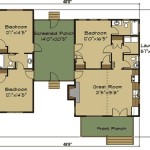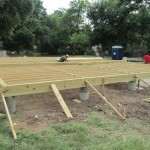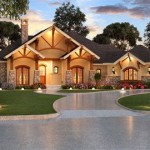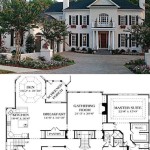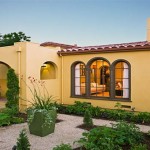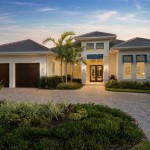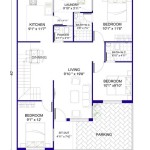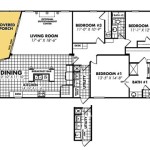A Frame House Plans with 3 Bedrooms: Exploring Design and Functionality
The A-frame house, characterized by its steeply angled roof that extends to the ground, offers a unique and often economical housing solution. While traditionally associated with smaller vacation homes, A-frame designs have evolved to accommodate larger families and more sophisticated living arrangements. This article delves into the intricacies of A-frame house plans incorporating three bedrooms, exploring the various design considerations, functional aspects, and potential benefits associated with this architectural style.
The defining characteristic of an A-frame house is its triangular shape. This design inherently provides a large, open living area under the high-pitched roof, often maximizing views with expansive windows at the gable ends. However, integrating three bedrooms into this structure requires careful planning to optimize space and ensure comfortable living. The layout usually involves a combination of the main level and an upper loft or second story, offering distinct zones for living and sleeping areas.
Maximizing Space in A-Frame 3-Bedroom Designs
One of the primary challenges in designing a three-bedroom A-frame house is effectively utilizing the available space. The sloped walls of the A-frame structure can limit headroom, particularly on the upper levels. Therefore, architectural plans must address this constraint through strategic placement of walls, dormers, and built-in storage solutions. Creative design choices can help transform potentially awkward spaces into functional and aesthetically pleasing areas.
Consideration must be given to the placement of the bedrooms. Typically, the master bedroom is situated on the main floor, providing ease of access and privacy. The remaining two bedrooms are often located in the loft or second story. This vertical separation helps delineate the sleeping areas from the main living space, allowing for greater privacy and reduced noise transfer. However, alternative configurations are possible, depending on lot size, orientation, and homeowner preferences.
Built-in storage is crucial for maximizing space in an A-frame house. Closets can be integrated into the wall cavities under the sloping roof, utilizing what would otherwise be wasted space. Incorporating built-in shelves, drawers, and cabinets along the walls, particularly in the bedrooms and living areas, can significantly reduce clutter and create a more organized living environment. This approach optimizes the use of available square footage, making the house feel larger and more comfortable.
Dormers can play a critical role in expanding the usable space on the upper level of an A-frame house. They provide additional headroom, allowing for more comfortable movement and furniture placement. Dormers can also introduce natural light and ventilation to the loft area, making it a more inviting and livable space. The size, style, and placement of dormers should be carefully considered to ensure they complement the overall aesthetic of the A-frame design and effectively address the spatial limitations.
Furthermore, the open-concept design that is typical of A-frame houses can be leveraged to enhance the feeling of spaciousness. By minimizing interior walls and creating a seamless connection between the living room, dining area, and kitchen, the house feels larger and more inviting. This design approach allows for greater flexibility in furniture arrangement and encourages social interaction within the home. However, careful consideration must be given to noise control and privacy, especially in a three-bedroom configuration.
Addressing Functional Considerations
Beyond space optimization, several functional considerations must be addressed when designing A-frame house plans with three bedrooms. These include proper insulation, ventilation, lighting, and accessibility. Ensuring these elements are adequately addressed is crucial for creating a comfortable, energy-efficient, and safe living environment.
Insulation is paramount in A-frame houses, due to the large surface area of the roof. Adequate insulation helps regulate temperature fluctuations, reducing heating and cooling costs. The insulation material should be carefully selected to suit the local climate and should be installed correctly to prevent air leaks and moisture buildup. Proper insulation also contributes to soundproofing, reducing noise transmission between rooms and from the exterior environment.
Ventilation is equally important for maintaining a healthy indoor environment. Proper ventilation removes stale air, moisture, and pollutants, preventing mold growth and improving air quality. A-frame houses can be prone to moisture buildup due to the sloping roof. Consequently, adequate ventilation is essential, particularly in areas such as bathrooms and kitchens. Skylights can be strategically placed to provide both natural light and ventilation, enhancing the overall comfort of the home. Exhaust fans in bathrooms and kitchens are also necessary to remove excess moisture.
Lighting is another critical aspect of interior design in A-frame houses. The sloped walls can limit natural light penetration, particularly on the lower levels. Therefore, careful planning is required to maximize natural light and supplement it with artificial lighting. Large windows at the gable ends, skylights, and strategically placed light fixtures can illuminate the interior and create a warm, inviting ambiance. LED lighting is an energy-efficient and versatile option that can be used to create different moods and highlight architectural features.
Accessibility is a key consideration, especially for families with young children or elderly members. The steep stairs that are common in A-frame houses can pose a challenge for those with mobility issues. Incorporating features such as handrails, wider stair treads, and adequate lighting can improve safety and accessibility. Alternatively, the design could include a bedroom and bathroom on the main floor to accommodate individuals who have difficulty navigating stairs. In some cases, a ramp could be added to the entrance for wheelchair accessibility.
Exploring Different A-Frame 3-Bedroom Design Styles
While the basic A-frame structure remains consistent, there is a wide range of design styles that can be incorporated into a three-bedroom plan. These styles can reflect different architectural preferences and lifestyle needs, allowing homeowners to customize their A-frame house to suit their specific tastes.
The Modern A-Frame design emphasizes clean lines, minimalist aesthetics, and contemporary materials. This style often features large expanses of glass, metal accents, and neutral color palettes. The interior is typically open and airy, with a focus on functionality and simplicity. Modern A-frame houses often incorporate sustainable design principles, such as solar panels, rainwater harvesting systems, and energy-efficient appliances.
The Rustic A-Frame design embraces natural materials, such as wood, stone, and brick, creating a warm and inviting atmosphere. This style often features exposed beams, wood-burning fireplaces, and cozy furnishings. The interior is typically decorated with earthy tones and rustic accents, evoking a sense of comfort and relaxation. Rustic A-frame houses are often located in rural or wooded settings, blending seamlessly with the surrounding environment.
The Scandinavian A-Frame design combines functionality with minimalist aesthetics, creating a light and airy living space. This style typically features white walls, light wood floors, and simple furnishings. The focus is on creating a calm and uncluttered environment, promoting relaxation and well-being. Scandinavian A-frame houses often incorporate natural light and ventilation, creating a healthy and sustainable living environment.
The traditional A-frame design typically features a simple, symmetrical structure with a focus on practicality and affordability. This style is often characterized by a wood exterior, a gable roof, and a straightforward interior layout. Traditional A-frame houses are often used as vacation homes or weekend retreats, providing a cozy and functional living space for small families or individuals. They are an economical option for those seeking a simple and charming housing solution.
The integration of three bedrooms into an A-frame house plan requires careful consideration of space optimization, functional requirements, and aesthetic preferences. By addressing these factors effectively, homeowners can create a unique and comfortable living environment that combines the charm of the A-frame structure with the practicality of a modern family home.

Prefab Small Homes On Instagram A Frame House Plan No 86950 By Familyhomeplans Com Total Living Area 1272 Sq Ft 3 Bedrooms And 1 5 Bathrooms Interior Plans

House Plan 43048 A Frame Style With 1274 Sq Ft 3 Bed 2 Bath
A Frame Home Plan 3 Bedrms 2 Baths 2054 Sq Ft 137 1205

A Frame Cabin House Plan 3 Bedroom 1 Bathroom 1600 Sq Ft

Cozy Winter Cabins A Frame House Plans And More Houseplans Blog Com

Cool A Frame Tiny House Plans Plus Cabins And Sheds Craft Mart
A Frame Home Plan 3 Bedrms 2 Baths 2054 Sq Ft 137 1205

A Frame Style With 3 Bed 2 Bath House Plans Cottage Plan

A Frame House Plans We Adore Houseplans Blog Com

A Frame Style With 3 Bed 2 Bath House Plans Cabin

